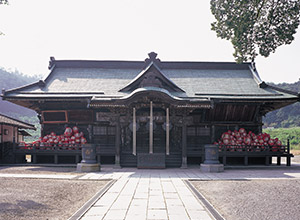1 Hodota Tumuli
Comprises the keyhole-shaped Futagoyama, Hachimanzuka and Yakushizuka Burial Mounds. Hachimanzuka is presently being restored to its original state 1500 years ago when it was first constructed, and visitors are able to view the original stone coffin inside (on days the Museum of Archaeology is open, 9:30-16:30).

2 Kamitsuke-no-Sato Museum of Archaeology
This museum adjacent to the Hodota Tumuli houses a replica of the first mansion of an ancient powerful clan to be discovered in Japan, many ancient clay figurines called “haniwa” and the oldest existing finely-ornamented shoes.
 1514 Ide-machi
1514 Ide-machi 027-373-8880
027-373-8880 9:30-17:00 (last entry 16:30)
9:30-17:00 (last entry 16:30) Adults ¥200, university/high school students ¥100, free for jr. high school students and younger and people 65 and over *Extra charge for special exhibitions
Adults ¥200, university/high school students ¥100, free for jr. high school students and younger and people 65 and over *Extra charge for special exhibitions Tuesdays (open if Tuesday is a national holiday, but closed the following day), end-of-year period
Tuesdays (open if Tuesday is a national holiday, but closed the following day), end-of-year period 30 min. by bus from Takasaki Sta.
30 min. by bus from Takasaki Sta.

3 Yamanoue Stela
The Yamanoue Stela, erected in 681, is the oldest still-standing stone monument in Japan. Priest Chori erected the stela in honor of his mother, Kurometoji, right next to her burial mound. The existence of the burial mound along with its epitaph from the seventh century makes it a very precious historic site. From the stela’s inscription it is apparent that Chori’s mother although having married Ogo-no-Omi, had remained at her family home in Sano, providing an insight to the marriage customs of the time.
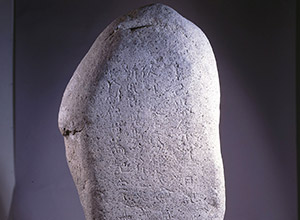
4 Tago Stela
The Tago Stela is one of three ancient stone monuments in Japan recognized for its fine calligraphy. The Tago Stela records the establishment of the new county of Tago in 711. The inscription uses a mix of Japanese and Chinese character readings and grammar. The quality of the calligraphy on the stela is highly regarded for its bold, cursive shape in the rikucho style from China. In the inscription is mention of “Hitsuji”, thought to be a person’s name, and to this day there remains local tales about this legendary person who was referred to on the Tago Stela.
 1085 Ike, Yoshii-machi
1085 Ike, Yoshii-machi 027-387-4928
027-387-4928 9:30-17:00 (last entry 16:30)
9:30-17:00 (last entry 16:30) 9:30-17:00 (last entry 16:30)
9:30-17:00 (last entry 16:30) Mondays (open if Monday is a national holiday but closed the following day), end-of-year period
Mondays (open if Monday is a national holiday but closed the following day), end-of-year period 25 min. walk from Yoshii Sta.
25 min. walk from Yoshii Sta.
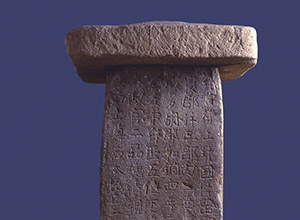
5 Kanaizawa Stela
The Kanaizawa Stela was erected in 726. The stela is dedicated to the memory of family ancestors, demonstrating the influence of newly-arrived Buddhist ideology on Japanese culture at the time. The content of the inscription indicates that orders of the imperial court were strictly adhered to in the provinces, and notably four of the nine people listed on the stela are women, suggesting their high social standing in ancient times. The Kanaizawa Stela is also the oldest written document in Gunma Prefecture that uses the name “Gunma” to refer to the region.
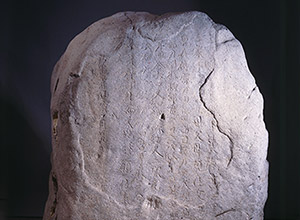
6 The Oguri Monument
Once holding a high ranking post in the Tokugawa Shogunate, Oguri Kozukenosuke went into exile in Kurabuchi Village after the collapse of the government. This monument in his honor stands on the banks of the Mizunuma River where he was arrested and consequently executed in 1868.
7 Tozen-ji Temple
 169 Gonda, Kurabuchi-machi
169 Gonda, Kurabuchi-machi 027-378-2230
027-378-2230 70 min. by bus from Takasaki Sta.
70 min. by bus from Takasaki Sta.
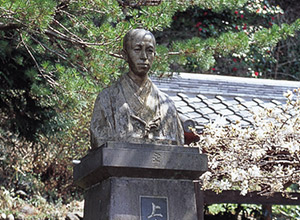
8 Minowa Castle Ruins
Minowa Castle was constructed under Nagano Narihisa about five hundred years ago. The ruins are from the time when Ii Naomasa ruled the castle and it was designated a National Historic Site in 1987. There are five walking trails nearby where visitors can enjoy the natural beauty of the four seasons.
 Nishi-Akiya, Misato-machi
Nishi-Akiya, Misato-machi 30 min. by bus from Takasaki Sta. + 20 min. walk
30 min. by bus from Takasaki Sta. + 20 min. walk
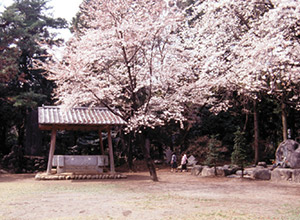
9 Kuragano Old Merchant House Omotenashi-kan
This historic shrine has attracted worshippers since ancient times. Its spectacular main hall appears to be joined to the massive rock under which it sits. Specialty dish of the area is monzen soba (buckwheat noodles).
 2010-6 Kuragano-machi
2010-6 Kuragano-machi 027-381-5311
027-381-5311 10:00- 16:00
10:00- 16:00 Mondays (open if Monday is a national holiday, but closed the following day)
Mondays (open if Monday is a national holiday, but closed the following day) 10 min. walk from Kuragano Sta.
10 min. walk from Kuragano Sta.
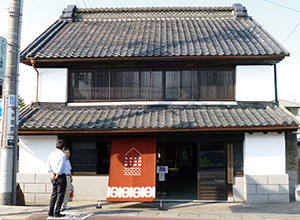
10 Haruna Shrine
This historic shrine has attracted worshippers since ancient times. Its spectacular main hall appears to be joined to the massive rock under which it sits. Specialty dish of the area is monzen soba (buckwheat noodles).
 849 Harunasan-machi
849 Harunasan-machi 027-374-9050
027-374-9050 70 min. by bus from Takasaki Sta.
70 min. by bus from Takasaki Sta.
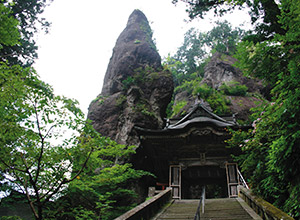
11 Shorinzan Daruma-ji Temple
The birthplace of the Daruma Doll, this temple has a hall displaying many kinds of Daruma from all over Japan. The Daruma Market is held on the 6th and 7th January, and thousands of people visit to buy Daruma Dolls.
 296 Hanadaka-machi
296 Hanadaka-machi 027-322-8800
027-322-8800 20 min. by bus from Takasaki Sta.
20 min. by bus from Takasaki Sta.
